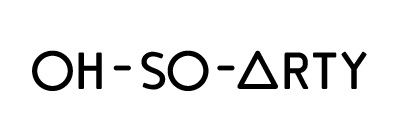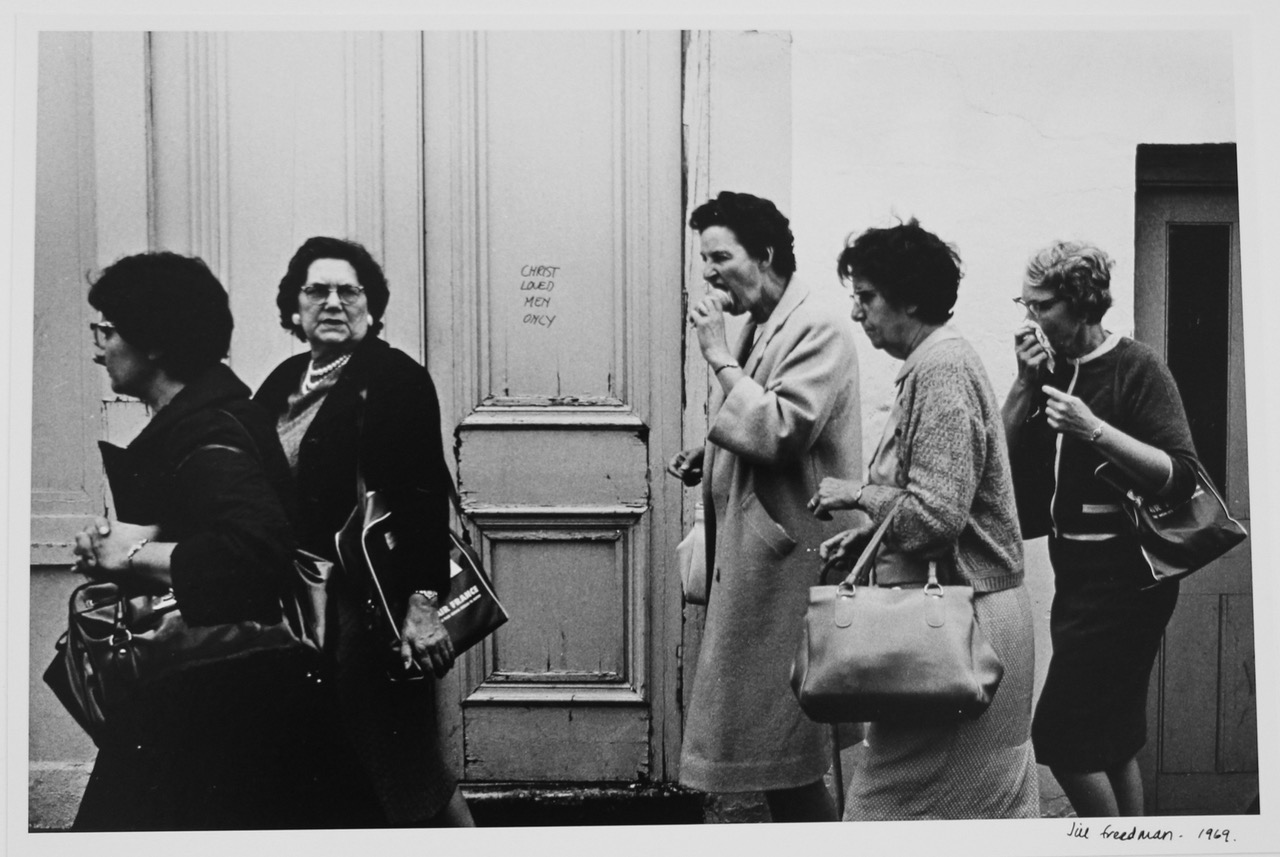The exhibitions selected this month shift between documentation, a quest for purity and escape from reality.
I.
Exhibition: Quiet Nights of Quiet Stars (Curated by Martin Jaeggi)
Artist: Walter Pfeiffer
Galerie: Gregor Staiger
Dates: Until November 25th, 2017
This is Galerie Gregor Staiger’s first exhibition of Walter Pfeiffer (b.1946, Switzerland). Pfeiffer is best known for his candid and informal photographs recording his life, friends and lovers. What makes this exhibition unusual is it presents his less known, but no less important, drawings (he only started photographing in the 1970s as a means to inspire his drawings!), alongside the photographs.
There’s a playful rhythm to the hang with its variety of scale, format, tones and subject. A pair of black & white closely cropped portraits of two young men with intense, knowing stares really grabbed me on entering – I felt like they were challenging me to come inside! Groups of small drawings (switching from colour inks to pencil sketches) of nudes and still lifes, are interspersed with photographs. A small ink drawing of a simple wooden chair covered in a thick, red blanket hangs next to a minimal line drawing of a seated nude, his chin rested on his knee with a wistful gaze. This intimacy is reflected on the opposite wall by a black & white photograph of an empty sofa bathing in morning light with a dented pillow pressed in its corner, a trace of someone’s sleeping head? The mood changes with a photograph of a wide-eyed cat, its head poking out of the top of an upside down cardboard box. It seems the cat was just as perturbed by my intrusion! I loved these shifts in gear, from quiet reflection to explosive energy, with moments of humour and lightness.
In its extension of his own life and snapshot style, his work naturally aligns with other photographers such as Larry Clark, Peter Hujar and Nan Goldin. However, his quest for seeking out beauty (albeit often the darker sides) sets him apart. When asked what drives him to capture beauty, he responded: “Because you don’t know how fast it is fading”. The exhibition title, “Quiet Nights of Quiet Stars”, is taken from Antônio Carlos Jobim’s song (reinterpreted by Frank Sinatra). The languid mood exudes the same sense of nostalgia and serenity as Pfeiffer’s photographs, but still augers something darker. Sinatra sings “We will live eternally in this mood of reverie away from all the earthly cares around us”. I allowed myself to get lost in Pfeiffer’s dream-like world of care-free yet melancholic protagonists, but wondered ‘from what and whom are they escaping?’
Walter Pfeiffer, Untitled, 1978/2017
Courtesy the artist and Galerie Gregor Staiger, Zurich
II.
Exhibition: Bernd and Hilla Becher (Selected by Max Becher and organised with Olivier Renaud-Clément)
Artists: Bernd and Hilla Becher
Galerie: Hauser & Wirth Zürich
Dates: Until December 22nd, 2017
For over 40 years, the husband and wife duo Bernd (1931–2007, Germany) and Hilla (1934-2015, Germany) Becher photographed the architecture of industrialisation from the 1960s to early 1990s. Hauser & Wirth presents their archetypal blast furnaces, cooling towers, gas tanks, water towers and winding towers, perceived by the artists as modern-day cathedrals. As professors at the Kunstakademie Düsseldorf, the artists significantly influenced a younger generation of artists including Andreas Gursky, Candida Höfer, Thomas Ruff and Thomas Struth, who retained the Bechers’ controlled objectivity and documentary method but applied new technical/digital possibilities with a contemporary vision.
The Bechers described their subjects as “Anonymous Sculptures”, transformed into abstract forms, focusing on the geometry of circles, triangles and rectangles and closely aligning with the minimalist art movement of the time (particularly in the US with artists such as Sol LeWitt and Carl Andre). Always shot with an 8x10 large format camera and on grey overcast days (sunshine was their nemesis!), they would isolate their subjects with close cropping, usually taken from the same angle. They organised their photographs into series based exclusively on functional typologies and arranged them into grids or rows, both highlighting and reinforcing the sculptural properties of the architecture.
Every frame reveals an absence of humans and nature. This was essential to achieve their desired pure aesthetic, focusing solely on their subjects, without distraction. Indeed, they went to great lengths to achieve this – they’d been known to cut down tree branches or pay train drivers to move out of the frame (beer was their currency of choice!), in order to remove any extraneous information. Just as scientists work in labs, it seems the Bechers were documenting these disappearing industrial landmarks as specimens for preservation, with the same level of dedication and obsession! As I observed structure after structure, I was reminded of biomorphic forms. Overall the exhibition has an unsettling post-apocalyptic quality, removed from any recognisable reality.
Bernd & Hilla Becher, Terre Rouge, Esch-Alzette, L, 1979
© Estate Bernd and Hilla Becher, Courtesy the Estate and Hauser & Wirth
III.
Exhibition: Lento Violento
Artist: Talisa Lallai
Galerie: Bolte Lang
Dates: Until December 16th, 2017
What a pure sensory pleasure to enter Talisa Lallai’s (born 1989, Germany) exhibition, which radiated the southern Italian summer heat on a blustery Autumnal day in Zürich. Although the artist has always lived in Germany, both her parents are Italian and she spent many summers in southern Italy. The exhibition comprises Lallai’s own photographs alongside found photographs, objects and installations - a utopian view of a place she feels part of, but has never fully belonged.
Entering the gallery, I was immediately transported: a vibrant photograph of banana plants set sharply against a bright blue sky, the leaves rustling in the summer breeze like arms swaying in a crowd. A quick glance up revealed a terracotta plant pot with bright green vines drooping freely. To the right, a colourful swimming towel depicting a kitsch beach scene complete with ocean, palm trees and sunset in faded pinks, yellows and green hangs from a white towel rail. The works awoke in me a yearning for summer, a time for relaxation, where the days stretch out into a seemingly never-ending distance, but a season that nevertheless seems to end all too soon.
A sense of nostalgia continues in Lallai’s celebration of a period when photography was still developed manually, and was subject to imperfections. There is an installation of three found photographs depicting a beach and typical southern Italian village, dimmed in fading colours with a slight reddish tint, hung in their original gilded frames. Opposite hangs one of her own photographs, a peaceful ocean-scape behind a minimal, geometric rail – the exact same location as in one of the found photographs, which you would have no way of knowing but the kind of subtle hidden connection, Lallai enjoys. Taken with a cheap 1960s camera, the print contains all the grain and blur that she holds dear, far from high-end, crisp digital photography.
The meticulous display of works is both clean and minimal, and the objects pure. For example, I imagined the towel rail would be rusty, but it is pristine white. Another piece – a white postcard rack with a single pile of postcards, faded by the summer sun, is radiantly clean and new. The same goes for the plant pots. Though the installations are direct reflections of what the artist finds in Italy, they are removed from their context, like cut-outs. These contrasts give distance to the romantic view of crumbling, dusty streets and create a contemporary aesthetic. Lallai successfully combines nostalgia with an elegant and fresh aesthetic - a cool, energizing view to the haze of summer heat!
Installation view, Talisa Lallai “Lento Violento”, BolteLang, Zürich. Photo by Alexander Hana, © Talisa Lallai, Courtesy of BolteLang













